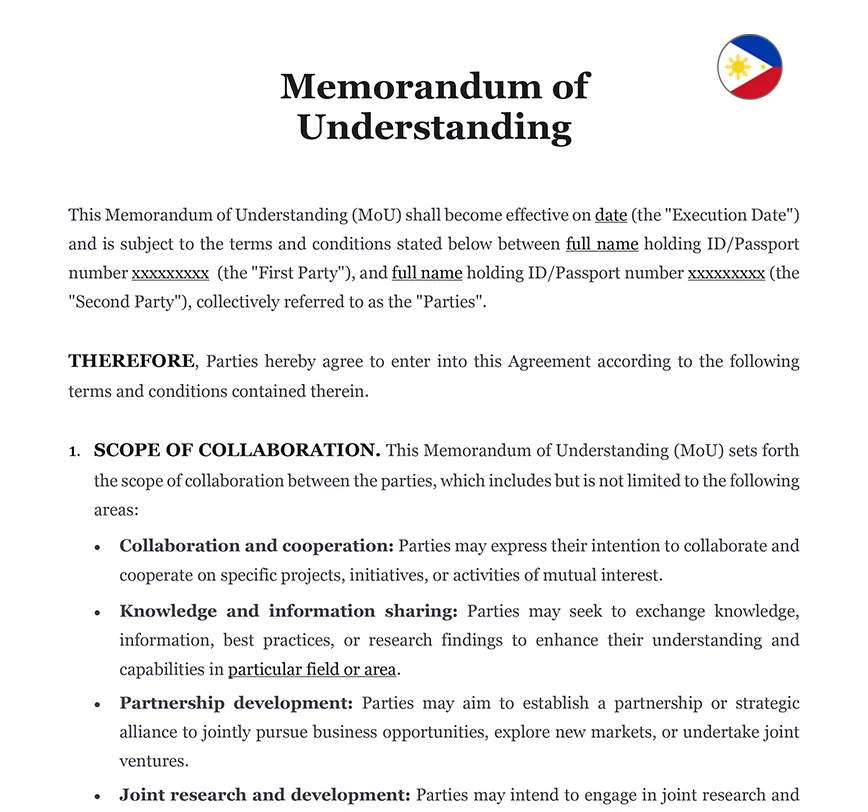
Download this memorandum of understanding (MOU) to define the mutual terms and objectives of two or more parties in a future agreement or collaboration.

Word Document (.docx)

Ready to use legal template
Drafted by experienced lawyers
Compliant with Filipino law
Ready to use legal template
Drafted by lawyers
Compliant with Filipino law
As a powerful tool for formalizing agreements and fostering collaboration, MOUs play a pivotal role in various industries and sectors. Whether you’re a business professional, entrepreneur, or individual seeking clarity and legal protection in your partnerships, our page offers valuable insights, resources, and guidance on creating and utilizing MOUs effectively. Discover the benefits, practical applications, and best practices of MOUs as we delve into their role in establishing successful collaborations.
A Memorandum of Understanding (MOU) is a formal agreement between two or more parties that outlines the mutual understanding, intentions, and expectations regarding a specific matter or cooperation. It is a non-binding document that establishes a framework for collaboration, cooperation, or joint initiatives. While an MOU is not legally binding, it serves as a commitment between the parties involved and provides a foundation for further negotiations or actions.
In the context of the Philippines, a Memorandum of Understanding plays a significant role in facilitating various partnerships and agreements, both domestically and internationally. It serves as a tool to promote cooperation, clarify objectives, and foster harmonious relationships among organizations, governments, or entities.
| ➤ It is a formal agreement between parties, serving as a declaration of intent and understanding. |
| ➤ It is a non-binding document, but it can lay the groundwork for future legally binding agreements. |
| ➤ It establishes a framework for cooperation, collaboration, or joint initiatives. |
| ➤ It can cover various areas such as trade, investment, research, education, and more. |
| ➤ It clarifies the roles, responsibilities, and expectations of the involved parties. |
| ➤ It promotes transparency and helps build trust between parties. |
| ➤ It can be used in both public and private sectors, fostering partnerships at different levels. |
| ➤ It provides a written record of the agreed-upon terms, which can be referred to if disputes arise. |